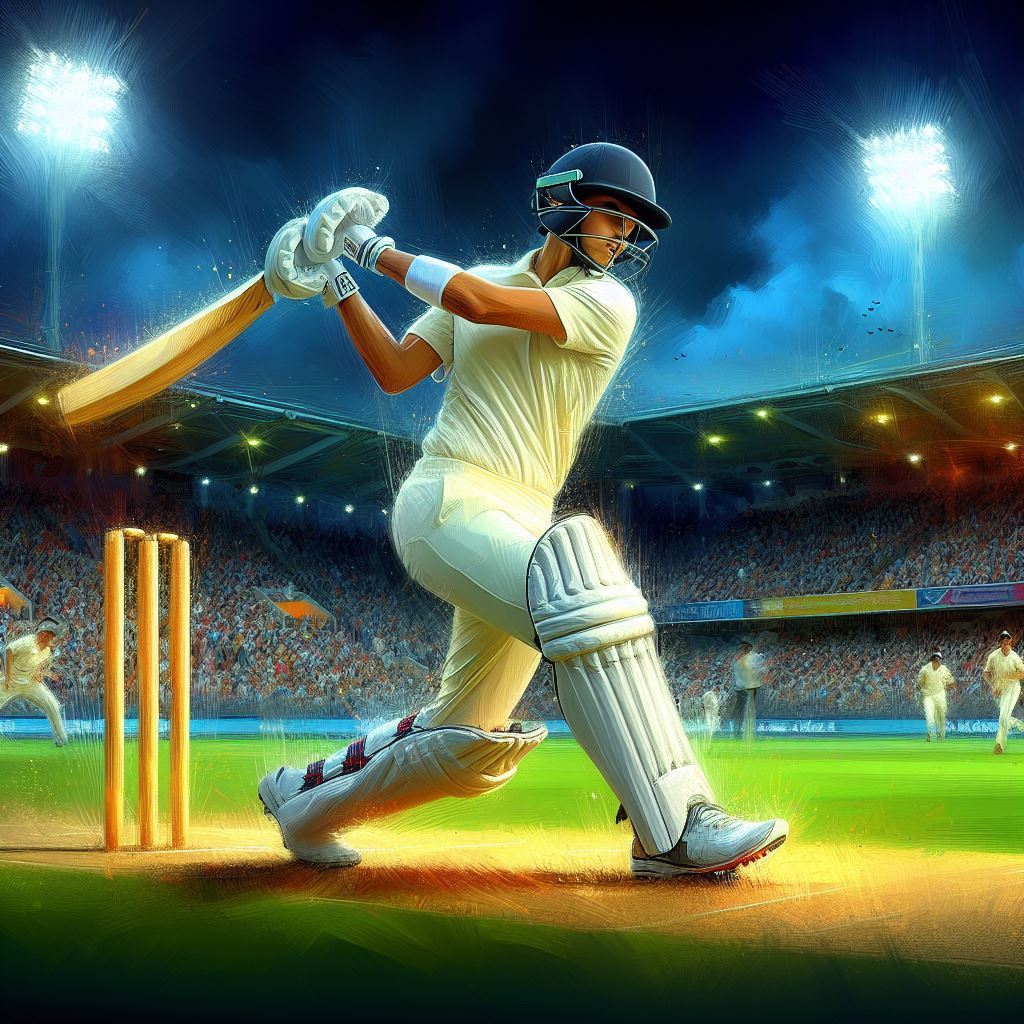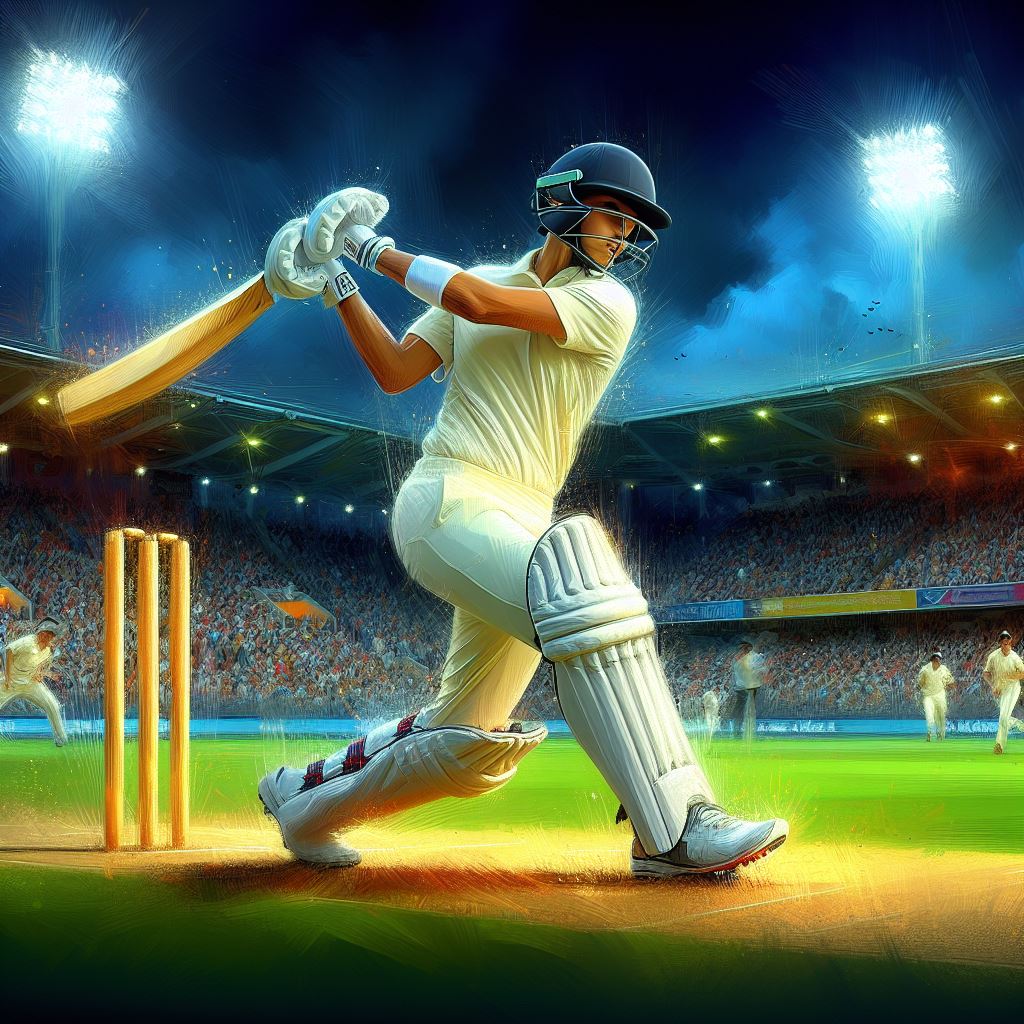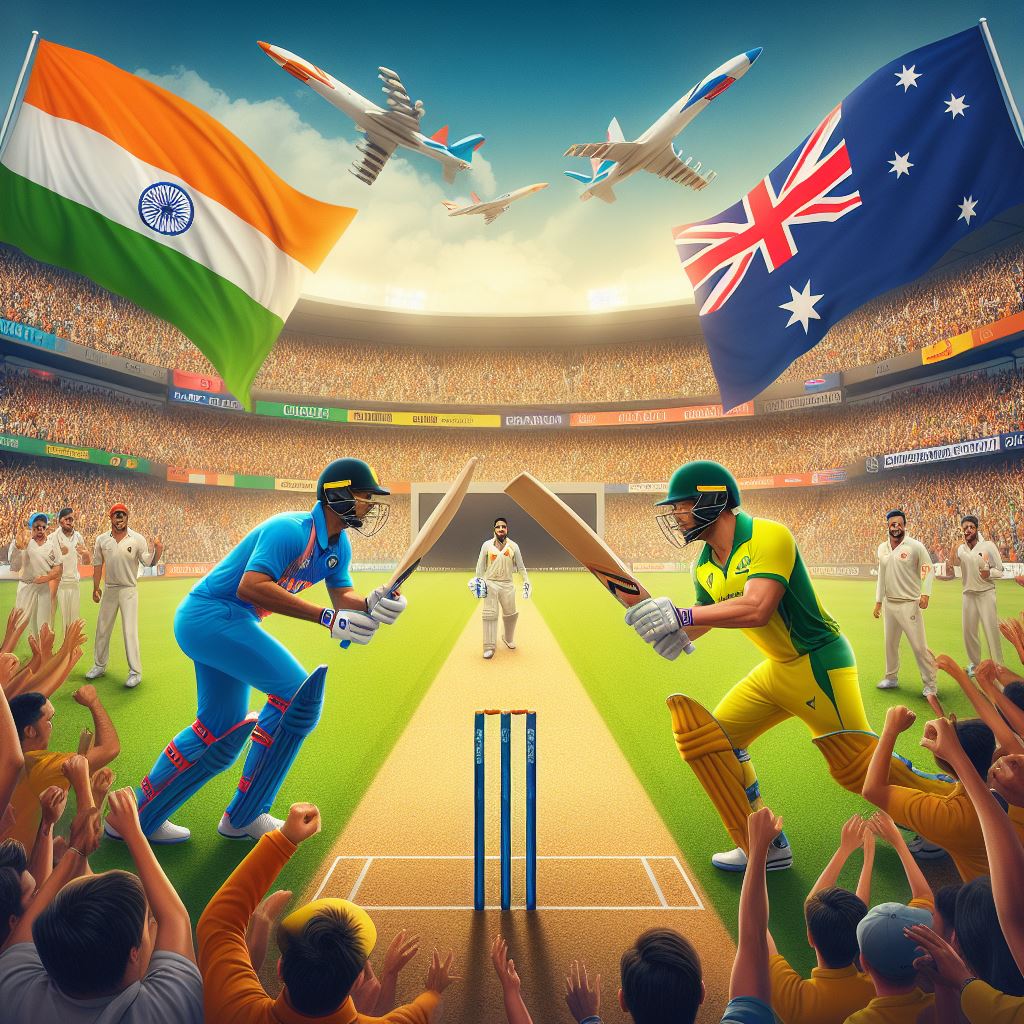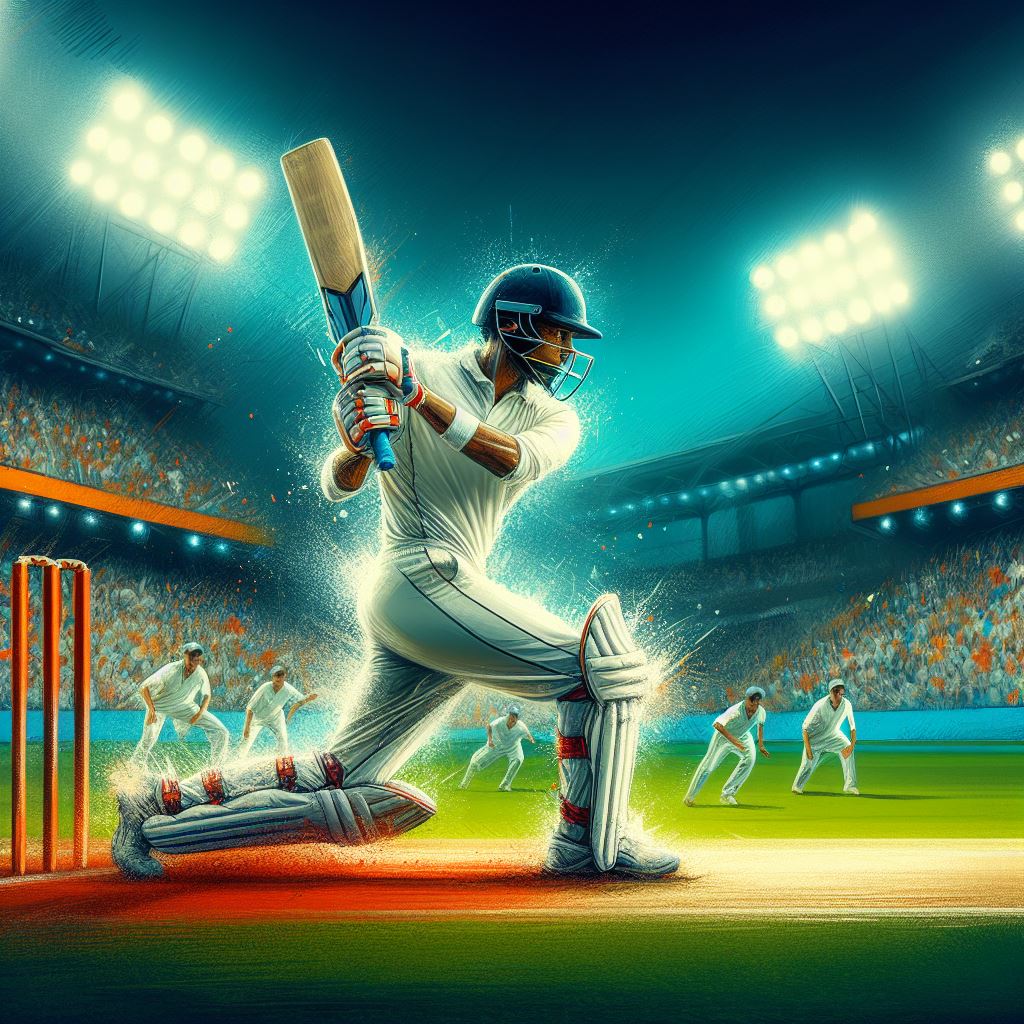Introduction to Cricket
Cricket, often described as a gentleman’s game, is a sport cherished by millions worldwide for its unique blend of strategy, skill, and camaraderie. Whether you’re a newcomer curious about the sport or a seasoned fan looking to deepen your understanding, this guide will unravel the intricacies of cricket and provide insights into its gameplay, rules, and rich history.
Cricket, often hailed as a gentleman’s game, stands as a testament to the beauty of sportsmanship, strategy, and skill. Originating in the picturesque English countryside centuries ago, cricket has since transcended borders and cultures, captivating hearts and minds across continents. Its rich tapestry weaves together a history steeped in tradition and innovation, making it not just a game but a cultural phenomenon cherished by millions.
As we embark on this journey to unravel the art of cricket, it’s essential to understand the allure it holds for enthusiasts worldwide. From the thunderous roar of the crowd in packed stadiums to the serene tranquility of a village green on a lazy summer afternoon, cricket’s appeal lies in its ability to unite people from diverse backgrounds under a common passion.
Whether you’re a curious newcomer eager to grasp the fundamentals or a seasoned fan seeking to deepen your appreciation, this beginner’s guide will serve as your compass through the labyrinth of cricket’s intricacies. Together, we’ll explore the nuances of batting, bowling, and fielding, dissect the rules that govern the game, and delve into the vibrant tapestry of tournaments that dot the cricketing calendar.
So, let’s embark on this odyssey into the heart of cricket, where every stroke of the bat, every delivery bowled, and every catch taken tells a story of skill, strategy, and sheer determination. Welcome to the world of cricket, where the journey is as exhilarating as the destination, and the spirit of the game reigns supreme.
Table of Contents
Brief History of Cricket
Cricket traces its origins back to 16th-century England, where it evolved from a simple bat-and-ball game played in rural villages to become one of the world’s most popular sports.
Popularity Worldwide
While cricket’s roots are in England, it has grown into a global phenomenon, particularly in countries such as India, Australia, Pakistan, and the West Indies, where it enjoys immense popularity and passionate fan bases.

Basic Rules of Cricket
Cricket is played between two teams, each consisting of eleven players, on a circular or oval-shaped field. The game revolves around three primary aspects: batting, bowling, and fielding.
Overview of Gameplay
The objective of cricket is for one team to score more runs than the opposing team while also dismissing their opponents’ batsmen.

Key Components: Batting, Bowling, Fielding
- Batting: The batsman’s role is to score runs by hitting the ball and running between the wickets.
- Bowling: The bowler’s aim is to dismiss batsmen by delivering the ball towards the batsman’s wicket.
- Fielding: Fielders aim to prevent runs and take catches to dismiss batsmen.
Understanding the Cricket Pitch
Dimensions and Layout
The cricket pitch is a rectangular strip in the center of the field where most of the action takes place. It is typically 22 yards long and 10 feet wide.
Role in Gameplay
The condition of the pitch can significantly impact gameplay, influencing factors such as ball movement, bounce, and spin.

The Equipment Needed
Cricket requires minimal equipment, primarily consisting of a bat, ball, and protective gear for players.
Cricket Bat
The cricket bat is a flat, wooden instrument used by batsmen to strike the ball.

Cricket Ball
The cricket ball is a hard, cork-centered sphere covered in leather, designed to be bowled at high speeds.
Protective Gear
Players wear protective gear such as helmets, pads, gloves, and abdominal guards to safeguard themselves from injury.
Batting in Cricket
Stance and Grip
A batsman’s stance and grip are crucial for maintaining balance and control while facing deliveries from the bowler.
Scoring Runs
Runs in cricket are scored by the batsmen running between the wickets after hitting the ball or by hitting boundaries or sixes.

Different Types of Shots
Batsmen employ various shots, including drives, cuts, pulls, and sweeps, to score runs and manipulate the field.
Bowling in Cricket
Types of Bowling Techniques
Bowlers utilize different bowling techniques, including fast bowling, swing bowling, spin bowling, and seam bowling, to deceive batsmen and take wickets.
Bowling Strategies
Bowlers employ tactics such as line and length variations, pace changes, and field placements to outwit batsmen and restrict scoring.

Fielding Positions and Tactics
Overview of Fielding Positions
Fielders are strategically positioned around the field to prevent runs and take catches. Common positions include slips, gully, mid-off, mid-on, and deep fielders.
Fielding Tactics and Strategies
Fielding teams employ tactics such as setting attacking or defensive fields based on the situation of the game and the strengths and weaknesses of the batsmen.

Scoring Runs and Taking Wickets
Runs: Singles, Boundaries, Sixes
Batsmen score runs by running between the wickets or by hitting boundaries, including fours (four runs) and sixes (six runs).
Wicket-taking Methods: Bowled, Caught, LBW
Bowlers aim to dismiss batsmen through various methods, including bowling them out, catching them off a hit ball, or trapping them lbw (leg before wicket).

The Role of Umpires
Duties of Umpires
Umpires officiate the game, making decisions on dismissals, runs, and other aspects of gameplay.
Decision-making Process
Umpires use their judgment and knowledge of the rules to make decisions, with the assistance of technology in some cases.

Formats of Cricket
Test Cricket
Test cricket is the longest format of the game, played over five days between national teams.
One Day Internationals (ODIs)
ODIs are limited-overs matches played between national teams, typically lasting one day.

Twenty20 (T20) Cricket
T20 cricket is a fast-paced format played over approximately three hours, featuring explosive batting and innovative strategies.
Major Cricket Tournaments
ICC Cricket World Cup
The ICC Cricket World Cup is the premier international cricket tournament, held every four years, featuring teams from around the world competing for the prestigious trophy.
ICC T20 World Cup
The ICC T20 World Cup is a global tournament specifically for the Twenty20 format, showcasing the fastest-growing format of the game.

Indian Premier League (IPL)
The IPL is a professional Twenty20 cricket league in India, known for its high entertainment value and star-studded lineups.
Cricket Etiquette and Spirit of the Game
Fair Play
Cricket emphasizes fair play, sportsmanship, and respect for opponents and officials, known as the “spirit of cricket.”
Respect for Opponents and Officials
Players are expected to uphold the values of respect, integrity, and fair competition both on and off the field.

Common Cricket Terms
Glossary of Cricket Terms
Understanding common cricket terms such as wicket, innings, lbw, and yorker is essential for comprehending the game’s intricacies.
Understanding Cricket Terminology
Familiarizing oneself with cricket terminology enhances appreciation and enjoyment of the sport, whether watching or playing.

Tips for Beginners
Practice Drills
Engaging in regular practice drills helps beginners improve their batting, bowling, and fielding skills.
Joining a Cricket Club or Team
Joining a local cricket club or team provides opportunities for structured training, camaraderie, and competitive play.
Conclusion
In conclusion, cricket is a captivating sport with a rich history, complex gameplay, and global appeal. Whether you’re a novice eager to learn or a seasoned fan seeking to deepen your understanding, embracing the art of cricket promises endless excitement, camaraderie, and a deeper appreciation for the game’s nuances.
In closing, our voyage through the intricate world of cricket has been nothing short of exhilarating. From dissecting the nuances of batting techniques to unraveling the mysteries of spin bowling, we’ve traversed the vast landscape of this beloved sport, discovering new insights and forging deeper connections along the way.
As we bid adieu to this beginner’s guide, it’s important to reflect on the lessons learned and the memories forged. Cricket isn’t merely a game; it’s a journey—a journey marked by triumphs and defeats, camaraderie and competition, and above all, a shared love for the sport that knows no bounds.
To the novice cricketer setting foot on the field for the first time, may this guide serve as your compass, guiding you through the maze of rules and strategies with patience and perseverance. And to the seasoned enthusiast, may it reignite your passion for the game, inspiring you to cherish each moment spent on the hallowed turf, be it as a player or a spectator.
As we part ways, let us carry with us the spirit of cricket—the spirit of fair play, respect, and camaraderie—into every aspect of our lives. For in cricket, as in life, it’s not just about winning or losing but about the friendships forged, the lessons learned, and the memories created that truly matter.
So, as the sun sets on our journey through the art of cricket, let us not bid farewell, but rather, let us embrace the timeless beauty of the game and carry it with us wherever we go. For in the heart of every cricket enthusiast lies a spark—a spark that ignites passion, fosters camaraderie and keeps the spirit of cricket alive for generations to come.
Until we meet again on the green fields of play, let us remember that cricket isn’t just a sport—it’s a way of life, a celebration of the human spirit, and a testament to the enduring power of unity, perseverance, and above all, love for the game.
Farewell, fellow cricket enthusiasts, and may the spirit of cricket continue to inspire and unite us all.
FAQs
- Is cricket difficult to learn for beginners?
- While cricket has its complexities, beginners can start with the basics and gradually improve their skills with practice and guidance.
- What are some essential skills for playing cricket?
- Essential skills include batting technique, bowling accuracy, fielding agility, and strategic thinking.
- How can I improve my cricket knowledge?
- Watching matches, reading about cricket history and rules, and actively participating in the sport can enhance your cricket knowledge.
- Are there opportunities to play cricket casually or recreationally?
- Yes, many communities offer casual or recreational cricket leagues and events for players of all skill levels.
- What are some common mistakes to avoid in cricket?
- Common mistakes include improper technique, lack of communication among players, and not adhering to the rules of fair play.
- How long does a cricket match typically last?
- The duration of a cricket match varies depending on the format. Test matches, the longest format, span five days, while One Day Internationals (ODIs) are completed in a single day. Twenty20 (T20) matches usually last around three hours.
- What are the different roles within a cricket team?
- A cricket team consists of batsmen, bowlers, wicketkeepers, and fielders. Batsmen aim to score runs, bowlers aim to dismiss batsmen, wicketkeepers handle the ball behind the stumps, and fielders aim to prevent runs and take catches.
- How are cricket matches affected by weather conditions?
- Weather conditions such as rain and bad light can interrupt cricket matches, leading to delays or even cancellations. In some cases, matches may be shortened, or teams may use special rules like the Duckworth-Lewis method to determine the result.
- What is the role of a captain in cricket?
- The captain is responsible for making strategic decisions during a cricket match, including setting fielding placements, selecting bowlers, and managing the team’s overall performance. Captains play a crucial role in guiding their team to success.
- What is the Duckworth-Lewis method, and how is it used in cricket?
- The Duckworth-Lewis method is a mathematical formula used to adjust target scores in limited-overs cricket matches affected by weather interruptions. It ensures a fair outcome by recalculating the target based on the number of overs lost.
- How do cricket teams prepare for matches?
- Cricket teams prepare for matches through rigorous training sessions focused on batting, bowling, fielding, and fitness. They also study opponents’ strengths and weaknesses and devise strategies accordingly.
- What is the role of a cricket coach?
- A cricket coach is responsible for training and developing players’ skills, implementing strategic plans, analyzing opponents, and fostering teamwork and discipline within the team. Coaches play a crucial role in guiding players to achieve their full potential.
- How do cricket teams travel for away matches?
- Cricket teams travel for away matches by various means, including airplanes, trains, and buses, depending on the distance and location of the match venue. Travel arrangements are carefully planned to ensure the team’s comfort and readiness for the match.
- What are some common cricket injuries, and how are they prevented?
- Common cricket injuries include muscle strains, ligament sprains, and impact injuries from balls or collisions. Players can prevent injuries by warming up properly, using protective gear, maintaining fitness, and practicing good technique.
- How are cricket tournaments organized, and what is their significance?
- Cricket tournaments are organized at various levels, from local club competitions to international events like the ICC Cricket World Cup. Tournaments provide opportunities for teams to compete against each other and showcase their talent on a global stage.
- What is the role of technology in modern cricket?
- Technology plays a significant role in modern cricket, aiding umpires in making decisions through tools like the Decision Review System (DRS), which allows teams to challenge on-field decisions. Technology also enhances the viewing experience for fans through innovations like ultra-motion cameras and ball-tracking technology.
- How do cricket teams analyze opponents’ strategies?
- Cricket teams analyze opponents’ strategies by studying their past performances, strengths, weaknesses, and playing styles. They also scout opposition players and devise tactics to exploit potential vulnerabilities during matches.
- What is the role of cricket commentators?
- Cricket commentators provide live commentary during matches, offering insights, analysis, and expert opinions on players’ performances, match situations, and strategic decisions. They enhance the viewing experience for fans by providing context and perspective on the game.
- How do cricket players maintain their fitness levels?
- Cricket players maintain their fitness levels through a combination of cardiovascular training, strength and conditioning exercises, agility drills, and flexibility exercises. They also follow balanced nutrition plans tailored to their individual needs.
- What are some famous cricket rivalries?
- Some famous cricket rivalries include the Ashes series between England and Australia, the India-Pakistan rivalry, and the Trans-Tasman rivalry between Australia and New Zealand. These rivalries add excitement and intensity to matches and are eagerly anticipated by fans worldwide.
- How do cricket teams strategize for different pitch conditions?
- Cricket teams adapt their strategies based on pitch conditions, which can vary depending on factors like soil type, weather, and usage. For example, on a slow, turning pitch, teams may focus on spin bowling and cautious batting, whereas on a fast, bouncy pitch, they may emphasize pace bowling and aggressive batting.
- What is the role of cricket administrators in the sport?
- Cricket administrators oversee the governance and management of the sport at various levels, including national cricket boards, international governing bodies like the International Cricket Council (ICC), and regional associations. They are responsible for organizing tournaments, enforcing rules and regulations, and promoting the growth and development of cricket.
- How do cricket teams handle pressure situations during matches?
- Cricket teams handle pressure situations by staying calm, maintaining focus, and relying on their training and experience. Captains play a crucial role in leading by example and making tactical decisions under pressure, while teammates offer support and encouragement to each other.
- What are some memorable moments in cricket history?
- Memorable moments in cricket history include iconic performances by players, thrilling matches decided in the final overs, and historic milestones such as record-breaking centuries and hat-tricks. These moments are etched in the annals of cricket lore and celebrated by fans worldwide.
- How do cricket teams foster team spirit and camaraderie?
- Cricket teams foster team spirit and camaraderie through team-building activities, bonding sessions, and shared experiences on and off the field. They cultivate a sense of unity, trust, and mutual respect among players, which contributes to their success as a team.
